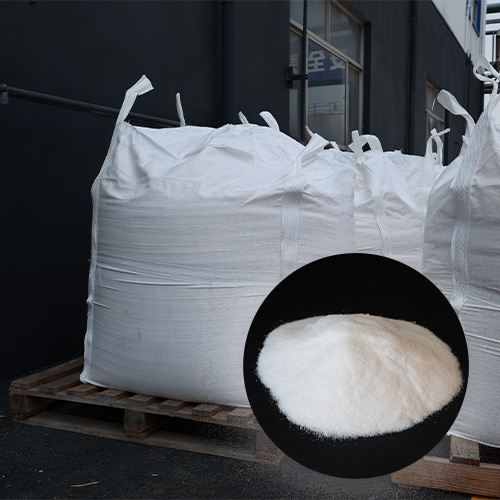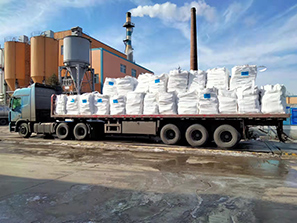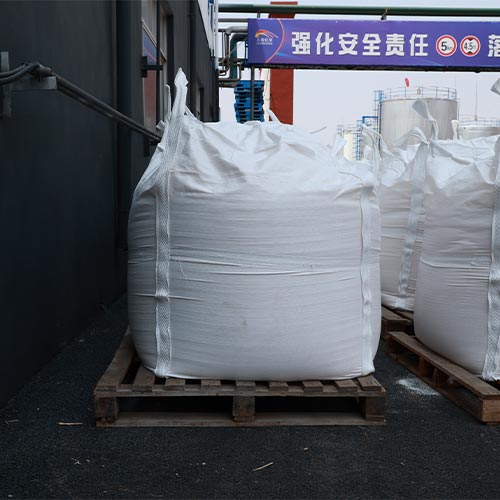Natriumformiat, eine chemische Verbindung mit einem faszinierenden Anwendungsspektrum, sorgt bei Wissenschaftlern und Industriellen gleichermaßen für großes Interesse. In diesem Artikel tauchen wir in die Welt von Natriumformiat ein und untersuchen seine chemischen Eigenschaften, Produktionsmethoden, vielfältigen Anwendungen, Umweltauswirkungen, Sicherheitsvorkehrungen und seine Rolle in verschiedenen Branchen.
Was ist Natriumformiat?

Sodium formate, represented by the chemical formula NaHCOO, is a chemical compound that consists of sodium (Na) and formate (HCOO-) ions. It appears as a fine, white powder that is easily soluble in water. This compound is known for its versatility and is used in various industries due to its unique properties.
Sodium formate is the sodium salt of formic acid (HCOOH), and it exhibits ionic bonding between the sodium cation (Na+) and the formate anion (HCOO-). It has a salty taste and is hygroscopic, meaning it readily absorbs moisture from the air, making it valuable in a range of applications.
Chemische Eigenschaften
Molecular Formula and Structure
The molecular formula of sodium formate is NaHCOO. It is composed of sodium (Na) and formate (HCOO-) ions. The chemical structure of sodium formate demonstrates ionic bonding between these ions. This ionic bond is what holds the sodium cation (Na+) and the formate anion (HCOO-) together in the compound. Sodium formate is commonly found as a white, crystalline powder and is readily soluble in water, which makes it suitable for various applications across different industries.
Physical State and Appearance
Sodium formate typically exists in a physical state as a fine, white powder. It has a crystalline appearance and resembles table salt in its texture. One of its notable features is its hygroscopic nature, which means that it readily absorbs moisture from the surrounding environment, including the air. This property makes it valuable in certain applications, particularly those where its moisture-absorbing capabilities are useful.
Produktion und Quellen
Synthesemethoden
Sodium formate can be synthesized using a method that involves neutralizing formic acid with sodium hydroxide. In this chemical reaction, formic acid (HCOOH) reacts with sodium hydroxide (NaOH) to produce sodium formate (NaHCOO) and water (H2O). This process is commonly employed in industrial production to create sodium formate, which has various practical applications across different industries.
Natural Sources
While sodium formate is primarily produced through synthetic methods, it can also be found in certain natural sources. One notable natural source of sodium formate is the secretions of certain species of ants. Some ants produce formic acid (HCOOH) as a part of their defensive mechanisms, and over time, this formic acid can react with minerals in the environment to form sodium formate.
It’s important to note, however, that the industrial-scale production of sodium formate far exceeds the quantities derived from these natural sources. Synthetic production methods are more efficient and practical for meeting the demand for this versatile chemical compound in various industries.
Anwendungen
Sodium formate boasts a wide range of applications across several industries. Some of its notable uses include:
Enteisungsmittel
Sodium formate is commonly employed as a deicing agent, especially in regions with cold climates. Its ability to melt ice and snow makes it valuable in the winter maintenance of roadways and runways. When spread on icy surfaces, sodium formate works by lowering the freezing point of water, causing ice and snow to melt. This property helps ensure safer transportation and reduces the risk of accidents during winter weather conditions. Sodium formate’s effectiveness as a deicing agent has made it a go-to solution for managing snow and ice accumulation in various transportation infrastructure applications.
Drilling Fluids
In the oil and gas industry, sodium formate plays a crucial role as an additive in drilling fluids. Drilling fluids, also known as drilling mud, are essential in the drilling process for various purposes, including lubricating the drill bit, cooling and cleaning the drill string, and stabilizing the wellbore.
Sodium formate is used in drilling fluids as a shale stabilizer. Shale, a type of sedimentary rock, can be prone to swelling and destabilization when it comes into contact with water-based drilling fluids. Sodium formate mitigates this issue by helping to prevent shale from swelling and disintegrating, thus maintaining the stability of the wellbore.
The addition of sodium formate to drilling fluids is a valuable practice that contributes to the overall success of drilling operations in the oil and gas industry. It helps ensure the structural integrity of the wellbore, minimizing the risk of wellbore instability and related challenges during the drilling process.
Gerben von Leder
In the leather industry, sodium formate is utilized as an essential component in the process of tanning. Tanning is the method by which animal hides, typically from cows, sheep, or goats, are treated to produce durable and supple leather materials. Sodium formate plays a significant role in this process due to its unique properties.
During tanning, sodium formate is used as a tanning agent, helping to transform raw animal hides into leather. It serves several important functions:
- Preservation: Sodium formate helps in preserving the hides, preventing decay and the growth of bacteria. This preservation process is crucial for turning raw animal hides into a material that won’t deteriorate over time.
- Softening: Sodium formate also contributes to the softening of the leather. It makes the leather more flexible and comfortable to work with, resulting in high-quality leather products such as shoes, bags, and garments.
- Stabilization: By stabilizing the collagen fibers in the animal hides, sodium formate ensures that the leather remains structurally sound and maintains its shape and texture.
Lebensmittelkonservierung
- Inhibition of Microbial Growth: Sodium formate acts as an effective antimicrobial agent. It inhibits the growth of bacteria, molds, and yeasts in food products. By preventing or slowing down microbial proliferation, it helps maintain the freshness and safety of various food items.
- pH Control: Sodium formate can be used to control and stabilize the pH levels of food products. Maintaining the correct pH is crucial in preventing spoilage and ensuring that the product remains safe to consume.
- Enhanced Shelf Life: By hindering the development of spoilage microorganisms and maintaining the quality of food products, sodium formate contributes to extending their shelf life. This results in reduced food waste and a longer window for consumers to enjoy the product.
Umweltbelastung
Biologische Abbaubarkeit
Sodium formate is known for its biodegradability, which is an important characteristic in terms of its environmental impact. Biodegradability means that the compound can break down naturally and be absorbed by the environment without causing long-term harm. Sodium formate decomposes into simpler and environmentally benign substances, primarily carbon dioxide and water, when it is exposed to natural conditions.
This property makes sodium formate a more eco-friendly choice compared to some chemical alternatives that might persist in the environment for extended periods, potentially causing pollution or ecological damage. As a biodegradable substance, sodium formate contributes to reducing the environmental footprint associated with its use in various applications.
Eco-Friendly Alternatives
Several eco-friendly alternatives are being developed and considered in industries where sodium formate is used, such as deicing agents, drilling fluids, and food preservation. These alternatives aim to minimize the ecological impact and address specific environmental concerns. Some examples of these alternatives include:
- Organic Deicers: Environmentally friendly deicing agents, often made from organic materials like beet juice or corn-based products, are becoming popular alternatives to traditional salt-based deicers. They are less harmful to vegetation and aquatic ecosystems.
- Green Drilling Fluids: In the oil and gas industry, there is a growing interest in green drilling fluids that have reduced environmental impact. These fluids may use biodegradable additives and have improved recycling and waste management processes.
- Natural Preservatives: The food industry is exploring natural preservatives, such as plant extracts and essential oils, to replace synthetic additives like sodium formate. These natural alternatives can help extend the shelf life of food products while satisfying consumers’ preferences for clean labels.
- Low-Impact Leather Tanning: Sustainable leather tanning methods are emerging, emphasizing the use of eco-friendly tanning agents like vegetable tannins and chrome-free options. These alternatives aim to reduce the environmental impact of leather production.
Sicherheitsvorkehrungen

Handhabung und Lagerung
- Storage Conditions: Sodium formate should be stored in a cool, dry place, away from sources of heat or direct sunlight. It’s crucial to keep the substance in a well-ventilated area to prevent the buildup of potentially hazardous fumes.
- Moisture Control: Sodium formate is hygroscopic, which means it readily absorbs moisture from the air. It’s important to keep it in a sealed container to prevent clumping or caking, which can affect its usability.
- Separation from Incompatible Materials: Store sodium formate separately from incompatible substances. Ensure it is not stored near strong acids, strong bases, or substances that may react with it, as this could lead to hazardous chemical reactions.
- Labeling: Containers of sodium formate should be clearly labeled to indicate their contents. This helps prevent confusion and ensures that it is handled and stored correctly.
- Protective Gear: When handling sodium formate, it’s advisable to wear appropriate personal protective equipment, including gloves and safety goggles, to protect against skin and eye contact.
- Ventilation: Work with sodium formate in well-ventilated areas to reduce the risk of inhaling dust or fumes. If working with the substance in an enclosed space, ensure adequate ventilation or use respiratory protection if necessary.
- Avoid Ingestion and Skin Contact: Ingestion of sodium formate should be prevented, as it may lead to gastrointestinal discomfort. Additionally, avoid skin contact, as it can cause skin irritation. If contact occurs, wash the affected area with plenty of water.
- Spill Response: In the event of a spill, take appropriate precautions and use protective gear. Isolate the area, contain the spill, and follow established cleanup procedures. Dispose of contaminated materials properly.
- Emergency Procedures: Ensure that appropriate emergency response procedures are in place, including access to safety showers and eye-wash stations. Familiarize personnel with these procedures.
- Handling and Transportation: When handling sodium formate, follow safe handling procedures and guidelines for transportation to prevent accidents and spills during transit.
Health Hazards
- Irritation: Inhalation of sodium formate dust or mist can lead to irritation of the respiratory tract. It’s advisable to work with sodium formate in well-ventilated areas to minimize the risk of inhaling airborne particles.
- Skin Contact: Direct contact with sodium formate may result in skin irritation, especially if the substance remains in contact with the skin for extended periods. It’s essential to wear appropriate protective clothing, including gloves, to prevent skin contact.
- Eye Contact: Sodium formate can also cause eye irritation if it comes into contact with the eyes. Safety goggles or protective eyewear should be worn when handling the substance.
- Ingestion: Ingesting sodium formate should be avoided, as it can lead to gastrointestinal discomfort, nausea, and vomiting. If ingested, medical attention should be sought immediately.
- Allergies and Sensitization: Some individuals may be sensitive or allergic to sodium formate. It’s crucial to be aware of any personal sensitivities or allergies and take appropriate precautions.
- Pre-existing Medical Conditions: Individuals with pre-existing medical conditions or respiratory issues should exercise extra caution when handling sodium formate. Consultation with a healthcare professional may be necessary.
Sodium Formate in Industry
Case Studies
Case Study 1: Sodium Formate in Aviation Deicing
In the aviation industry, the safe operation of aircraft during winter weather conditions is of paramount importance. Snow and ice accumulation on runways and aircraft surfaces can pose significant safety risks. Sodium formate plays a crucial role in ensuring safe takeoffs and landings during adverse weather conditions.
Problem: Snow and ice accumulation on runways and aircraft surfaces can impede aircraft movement and jeopardize safety.
Solution: Sodium formate, due to its deicing properties, is widely used to combat these challenges. It is applied to runways, taxiways, and aircraft surfaces to rapidly melt ice and snow. The compound’s ability to lower the freezing point of water helps ensure that aircraft can operate safely in winter weather conditions.
Results: Sodium formate helps prevent weather-related flight delays and cancellations, contributing to the efficiency and safety of air travel. It is a critical component of the winter maintenance strategies at airports worldwide.
Case Study 2: Sodium Formate in Oil Drilling
The oil and gas industry relies on efficient and safe drilling operations to extract valuable resources from the earth. Sodium formate is used in drilling fluids, enhancing drilling operations and wellbore stability.
Problem: Drilling operations encounter challenges such as wellbore instability, particularly in regions with shale formations.
Solution: Sodium formate is introduced into drilling fluids as a shale stabilizer. It prevents the swelling and destabilization of shale formations, maintaining the structural integrity of the wellbore. This contributes to safer and more efficient drilling operations.
Results: The incorporation of sodium formate in drilling fluids has led to improved wellbore stability, reduced drilling downtime, and enhanced safety. It has become a standard practice in the oil and gas industry, ensuring the successful extraction of valuable resources.
Fazit
In conclusion, sodium formate is a remarkable chemical compound with a wide spectrum of applications and advantages. Its unique properties make it a valuable component in industries ranging from transportation to food production. However, as we advance in our understanding of environmental sustainability, the search for even more eco-friendly alternatives continues.
Häufig gestellte Fragen
- Ist Natriumformiat schädlich für die Umwelt?
- Sodium formate is biodegradable, which is advantageous for the environment. However, eco-friendly alternatives are being explored.
- What is the primary use of sodium formate in the winter?
- Sodium formate is widely used as a deicing agent on roadways and runways to melt ice and snow.
- Can sodium formate be found in nature?
- Yes, sodium formate can be found in the secretions of certain ant species, but its industrial production surpasses natural sources.
- How is sodium formate used in leather tanning?
- Sodium formate aids in the preservation and softening of animal hides during the tanning process.
- What precautions should be taken when handling sodium formate?
- Proper storage, avoiding skin and eye contact, and preventing inhalation or ingestion are important safety precautions when handling sodium formate.



